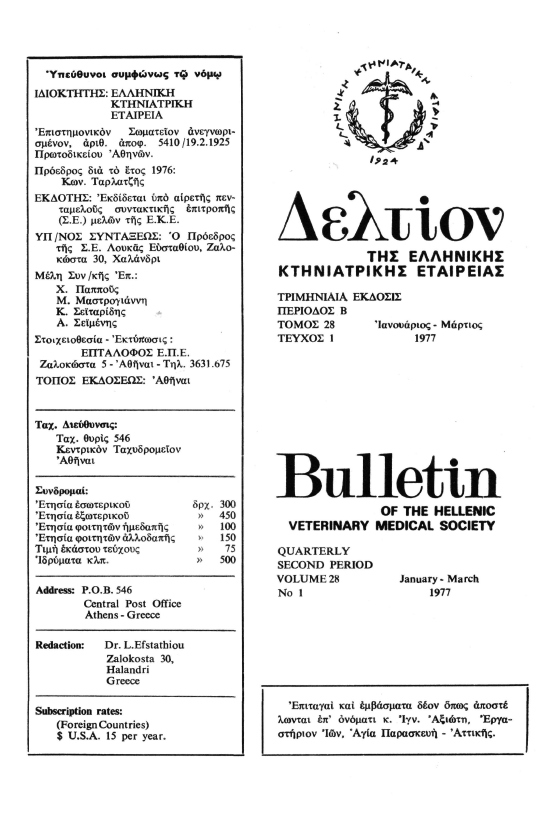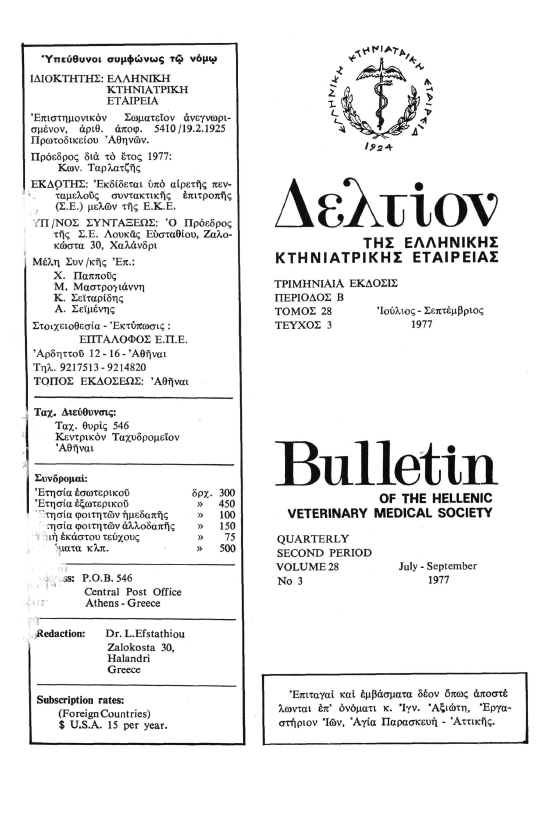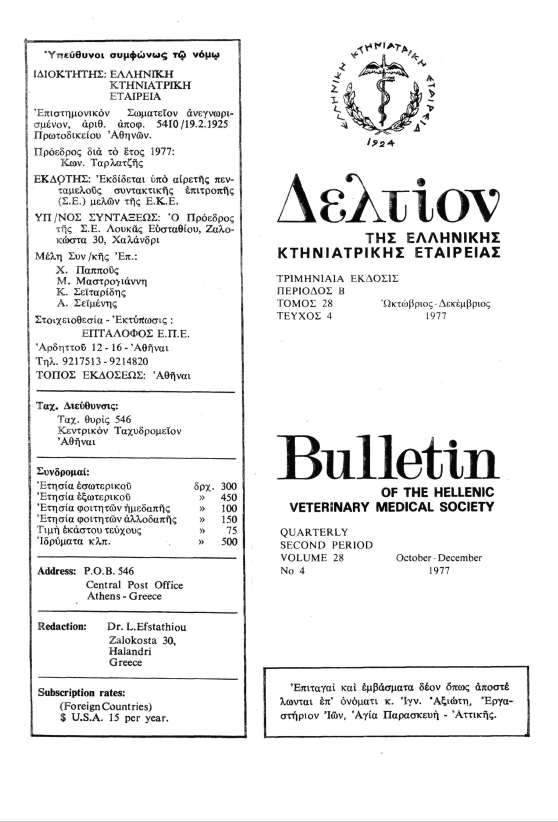Need of applying and improving the artificial fécondation of trout iridescent in Greece
Abstract
In the present research work, we have examined the case of the utilization and efficacy of some anaesthetics, especially ethylic ether, the pharmaceutical preparation MS-222 Sandoz and the mixture LARGACTIL-FARMOTAL in the narcosis of trouts which were destined to the artificial fécondation. As it concerns the artificial fécondation applied to the trouts, we came to conclusion by de mosstrating experimentaly that it is necessary to apply the anaesthesia in order to immobilize the fish and facilitate in this way the issue fof the eggs and of the sperm. The best results were obtained with MS-222 SANDOZ dissolved in water in the proportion I: 10.000 by plunging the reproductive trouts in this dilution for 5' minutes. Secondly, from the point of vue of efficacy, comes the mixture LARGACTIL-FARMOTAL in the proportion of 0.150 gr of LARGACTIL and I gr of FARMOTAL dissolved in 10 liters of water by plunging the reproductive trouts into the dilution for 1 minute
Article Details
- How to Cite
-
ΠΝΕΥΜΑΤΙΚΑΤΟΣ Γ. (2019). Need of applying and improving the artificial fécondation of trout iridescent in Greece. Journal of the Hellenic Veterinary Medical Society, 28(1), 19–27. https://doi.org/10.12681/jhvms.21281
- Issue
- Vol. 28 No. 1 (1977)
- Section
- Articles

This work is licensed under a Creative Commons Attribution-NonCommercial 4.0 International License.
Authors who publish with this journal agree to the following terms:
· Authors retain copyright and grant the journal right of first publication with the work simultaneously licensed under a Creative Commons Attribution Non-Commercial License that allows others to share the work with an acknowledgement of the work's authorship and initial publication in this journal.
· Authors are able to enter into separate, additional contractual arrangements for the non-exclusive distribution of the journal's published version of the work (e.g. post it to an institutional repository or publish it in a book), with an acknowledgement of its initial publication in this journal.
· Authors are permitted and encouraged to post their work online (preferably in institutional repositories or on their website) prior to and during the submission process, as it can lead to productive exchanges, as well as earlier and greater citation of published work.





